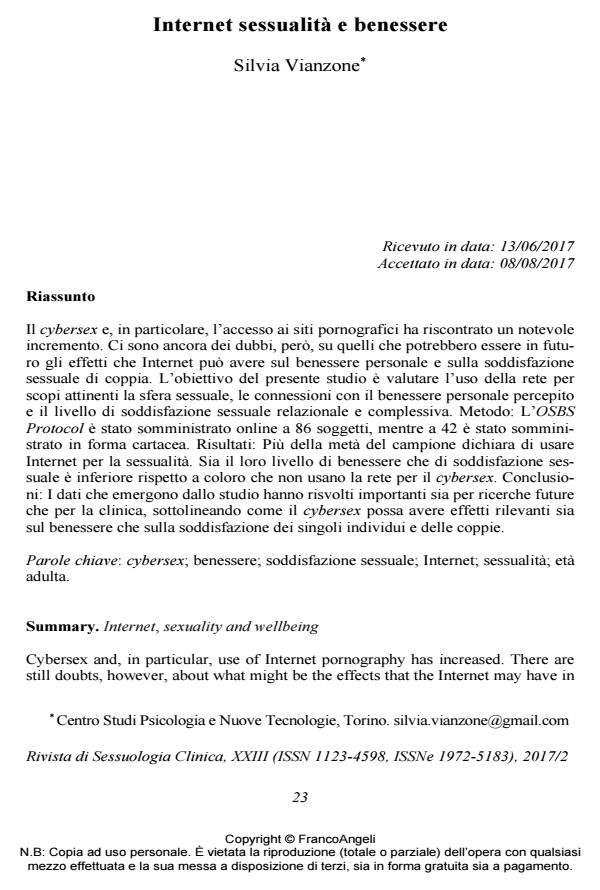Internet sessualità e benessere
Titolo Rivista RIVISTA DI SESSUOLOGIA CLINICA
Autori/Curatori Silvia Vianzone, Ivan De Marco, Eddy Chiapasco
Anno di pubblicazione 2017 Fascicolo 2017/2
Lingua Italiano Numero pagine 16 P. 23-38 Dimensione file 295 KB
DOI 10.3280/RSC2017-002002
Il DOI è il codice a barre della proprietà intellettuale: per saperne di più
clicca qui
Qui sotto puoi vedere in anteprima la prima pagina di questo articolo.
Se questo articolo ti interessa, lo puoi acquistare (e scaricare in formato pdf) seguendo le facili indicazioni per acquistare il download credit. Acquista Download Credits per scaricare questo Articolo in formato PDF

FrancoAngeli è membro della Publishers International Linking Association, Inc (PILA)associazione indipendente e non profit per facilitare (attraverso i servizi tecnologici implementati da CrossRef.org) l’accesso degli studiosi ai contenuti digitali nelle pubblicazioni professionali e scientifiche
Il cybersex e, in particolare, l’accesso ai siti pornografici ha riscontrato un notevole incremento. Ci sono ancora dei dubbi, però, su quelli che potrebbero essere in futuro gli effetti che Internet può avere sul benessere personale e sulla soddisfazione sessuale di coppia. L’obiettivo del presente studio è valutare l’uso della rete per scopi attinenti la sfera sessuale, le connessioni con il benessere personale percepito e il livello di soddisfazione sessuale relazionale e complessiva. Metodo: L’OSBS Protocol è stato somministrato online a 86 soggetti, mentre a 42 è stato somministrato in forma cartacea. Risultati: Più della metà del campione dichiara di usare Internet per la sessualità. Sia il loro livello di benessere che di soddisfazione sessuale è inferiore rispetto a coloro che non usano la rete per il cybersex. Conclusioni: I dati che emergono dallo studio hanno risvolti importanti sia per ricerche future che per la clinica, sottolineando come il cybersex possa avere effetti rilevanti sia sul benessere che sulla soddisfazione dei singoli individui e delle coppie.
Parole chiave:Cybersex; benessere; soddisfazione sessuale; Internet; sessualità; età adulta.
Silvia Vianzone, Ivan De Marco, Eddy Chiapasco, Internet sessualità e benessere in "RIVISTA DI SESSUOLOGIA CLINICA" 2/2017, pp 23-38, DOI: 10.3280/RSC2017-002002